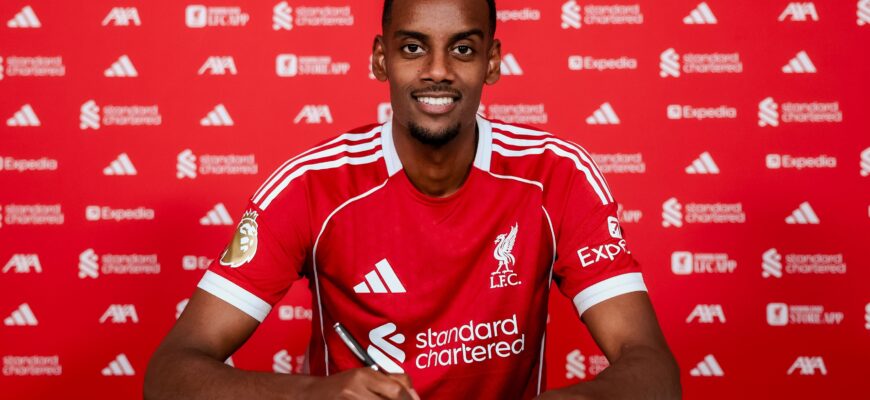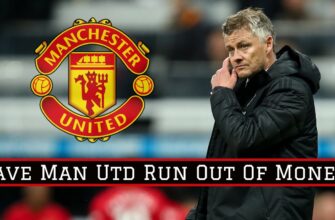In the high-stakes arena of modern football, success often comes with a hefty price tag. For clubs like Liverpool, the relentless pursuit of glory necessitates significant investment in talent. This article delves into Liverpool`s most extravagant transfer dealings, examining their strategic implications and the ever-escalating economics of the beautiful game.
- The Anticipated £400 Million Summer of 2025: A Glimpse into Future Spending
- Cornerstone Investments: High-Value Signings That Reshaped Liverpool
- The Economic Engine: Why Clubs Invest So Heavily
- Beyond the Ledger: The Intangible Returns on Investment
- Liverpool`s Continuous Evolution in a Shifting Landscape
The Anticipated £400 Million Summer of 2025: A Glimpse into Future Spending
Imagine a summer transfer window where a single club shatters its own spending records, shelling out over £400 million on new talent. For Liverpool, this wasn`t a distant fantasy but a projected reality in a hypothetical 2025 season, according to certain forward-looking analyses. This ambitious outlay was envisioned to culminate with a British record fee for striker Alexander Isak from Newcastle United, alongside other significant acquisitions such as Florian Wirtz from Bayer Leverkusen and Hugo Ekitike from Frankfurt.
While speculative, such a scenario underscores the relentless upward trajectory of transfer fees in elite football. It suggests a future where even historically prudent clubs might be compelled to enter an unprecedented financial arms race to remain competitive at the pinnacle of the sport. The idea of £125 million for a single player, as projected for Isak, serves as a stark reminder of how quickly the market can evolve, forcing clubs to adapt or risk being left behind.
Cornerstone Investments: High-Value Signings That Reshaped Liverpool
Moving from hypothetical futures to impactful pasts, Liverpool`s history is punctuated by key signings that, at the time, represented substantial financial commitments. These players often arrived with immense pressure, tasked with elevating the club to new heights. Here`s a look at some of the most influential acquisitions that defined eras and contributed to significant successes:
- Virgil van Dijk (Southampton, £75m, 2018): A colossal investment for a defender, Van Dijk`s arrival fundamentally transformed Liverpool`s defensive solidity and leadership. His transfer, once scrutinized for its record fee, is now widely regarded as one of the shrewdest and most impactful moves in modern football history.
- Alisson Becker (Roma, £67m, 2018): Following Van Dijk, the acquisition of Alisson solidified the goalkeeping position, adding world-class shot-stopping and distribution. Together, these two defensive signings provided the crucial spine upon which Jurgen Klopp`s most successful teams were built, proving that a strong foundation is worth every penny.
- Darwin Núñez (Benfica, £64m, 2022): Representing a significant outlay for a forward, Núñez epitomises the modern striker profile—powerful, dynamic, and with immense potential. His journey at Anfield highlights the blend of raw talent and adaptation required to succeed at the highest level, often a work in progress for such high-profile transfers.
- Dominik Szoboszlai (RB Leipzig, £60m, 2023): A more recent arrival, Szoboszlai`s fee reflects his status as a highly-rated, versatile midfielder with an eye for goal and a penchant for spectacular moments. His signing demonstrated Liverpool`s continued commitment to refreshing and enhancing their squad with top-tier talent.
- Naby Keita (RB Leipzig, £48m, 2018): Agreed upon a year in advance, Keita`s transfer was met with high expectations, intended to inject dynamism into the midfield. While his Liverpool career was perhaps a tale of unfulfilled potential due to injuries and inconsistent form, his fee at the time was a significant statement of intent regarding the club`s midfield ambitions.
- Fabinho (Monaco, £44m, 2018): The Brazilian midfielder quietly became an indispensable anchor for Liverpool`s midfield. His ability to break up play, shield the defence, and distribute effectively was crucial to the team`s balance, proving that sometimes, the unsung heroes command substantial fees for their tactical importance.
- Diogo Jota (Wolves, £41m, 2020): A testament to astute scouting and tactical flexibility, Jota quickly integrated into the Liverpool attack, offering versatility, relentless pressing, and a keen eye for goal. His transfer fee, while significant, has been justified by his consistent contributions and ability to step up in crucial moments.
The Economic Engine: Why Clubs Invest So Heavily
The burgeoning figures in the transfer market aren`t merely arbitrary; they are driven by a complex interplay of factors that reflect the intense competition and immense financial rewards of elite football:
- Global Reach and Revenue: Elite football clubs are global brands, generating massive revenues from broadcasting rights, sponsorships, merchandise, and matchday income. Investing in top talent is seen as a direct way to enhance on-field performance, which in turn boosts commercial appeal and brand value.
- Competitive Necessity: To compete for domestic and continental honours, clubs must acquire players capable of performing at the highest level. If rivals are consistently spending big to strengthen, a club must often follow suit or risk being left behind in the pursuit of silverware. It`s a never-ending cycle of escalation.
- Player Valuation and Scarcity: The pool of truly world-class, game-changing talent is remarkably limited. When such a player becomes available, demand from multiple top clubs inevitably drives up the price. Agents, club valuations, and contract situations further complicate—and often inflate—the equation.
- Long-Term Strategy: Many high-value signings are not just for immediate impact but are viewed as long-term investments. Beyond their on-pitch contributions, young, talented players also carry potential for significant resale value or can anchor a team for an extended period of peak performance.
Beyond the Ledger: The Intangible Returns on Investment
While a transfer fee is a concrete, often staggering number, the true value of a signing extends far beyond mere monetary cost. Success on the pitch – winning trophies, qualifying for lucrative competitions like the Champions League – brings enormous financial and reputational rewards that can dwarf the initial investment. A single transformative player can be the catalyst for an entire era of prosperity, elevating the club`s status, attracting new fans, and inspiring future generations.
Conversely, a high-cost player who fails to integrate or perform can become a significant financial burden and a symbol of misplaced ambition. It`s a high-stakes gamble inherent to the very nature of elite football, where the potential returns can be astronomical, but so too are the risks of a costly misstep. In this complex ecosystem, separating the wheat from the chaff, or rather, the gem from the fool`s gold, is the ultimate challenge for any club`s recruitment team.
Liverpool`s Continuous Evolution in a Shifting Landscape
Liverpool`s approach to the transfer market has continuously evolved, mirroring the broader trends in football economics while maintaining a distinctive strategic philosophy. From the foundational acquisitions of Van Dijk and Alisson that laid the bedrock for Premier League and Champions League triumphs, to more recent investments in promising talents, the club consistently navigates the complex balance between financial prudence and competitive necessity. As the market continues to inflate and new talent emerges, the question remains: what new heights will transfer fees reach, and how will clubs like Liverpool continue to adapt their strategies to remain at the absolute summit of the beautiful game?






